
















































This issue dedicated to Joe Lomanto of Clinton, NY



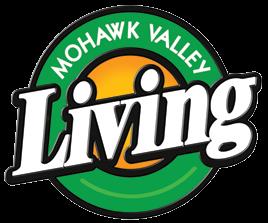


On a sunny afternoon in early September, I walked down to our local Agway for some supplies. As I talked with shop owner Chris, we were distracted by the sound of honking and sirens as a long procession of fire trucks, dozens of tow trucks from around the state, and sparkling blue-and-white Clinton Collision vehicles passed by. Then we saw the casket of Joe Lomanto, draped in an American flag, on a flatbed pulled by an antique Clinton Collision tow truck. Our conversation turned to discussing the substantial effect this one man had on our community.
Joe Lomanto had advertised his business, Clinton Collision, in our magazine since its beginning. Though we hope it brought him business over the years, we know he did it mostly because he loved his community and wanted a magazine like this to exist. He lived a long, impactful life, giving to his country, community, and family. He served in the US Army during the Korean War and dedicated 59 years to the Clinton Fire Department and many other community causes.
On my walk home, I started thinking about the recent hot topic of “blue zones” and the secret to longevity. (Blue zones are regions of the world where people live longer than average.) After learning about these regions, you might feel compelled to hop on a plane and relocate. But a more practical response is to learn from them and adopt many of their best practices. Of course, a good diet and time outdoors are contributing factors, but also important are finding purpose and building community and family relationships. We can follow the example set by Joe—who lived an active life into his 90s—and dedicate ourselves to making our corner of world a little bluer and the kind of place in which we can thrive. •
colonialdays, thenameoftheautumnproduce calledapplesnowadays, istodaynolongerinuse.
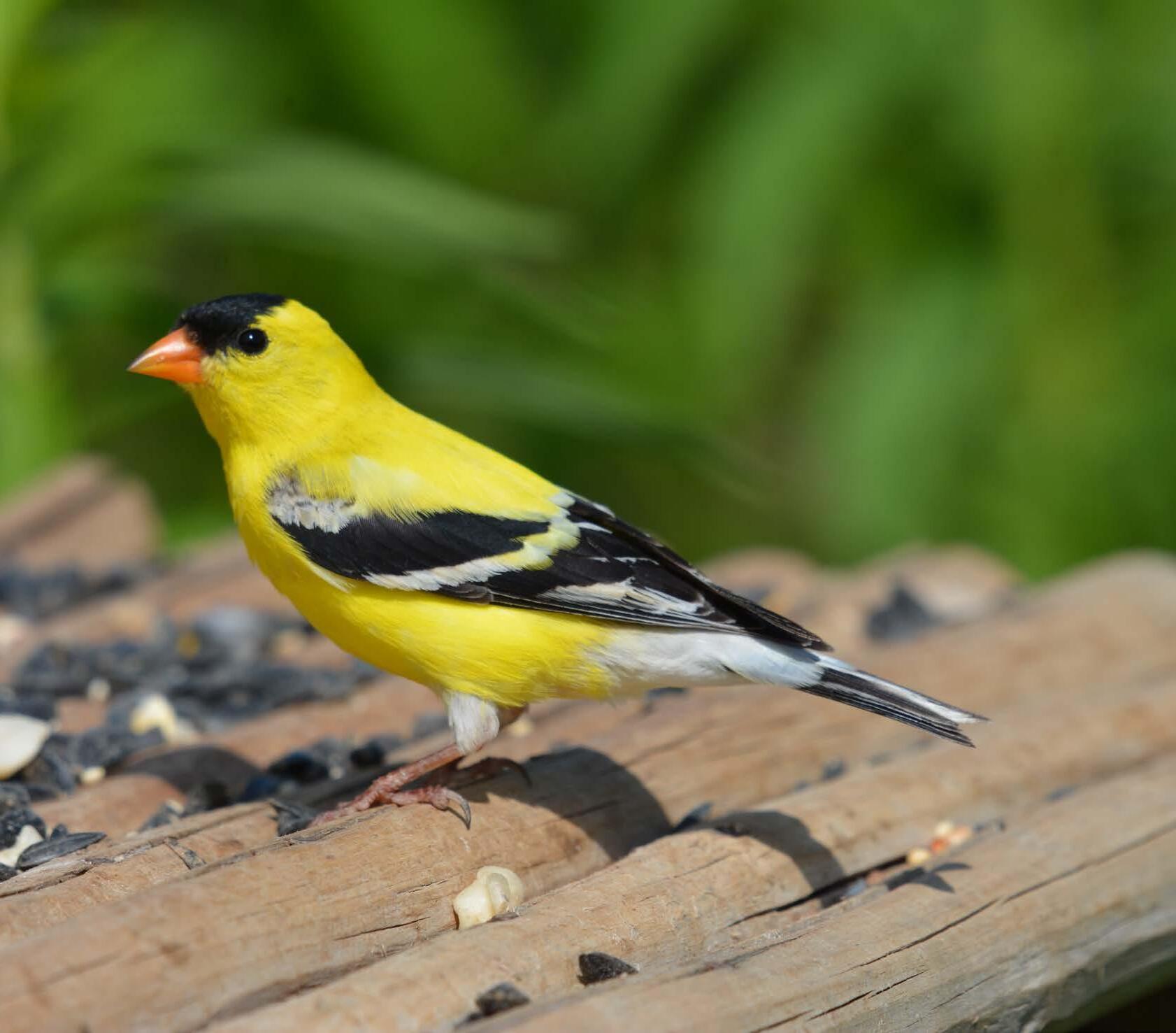


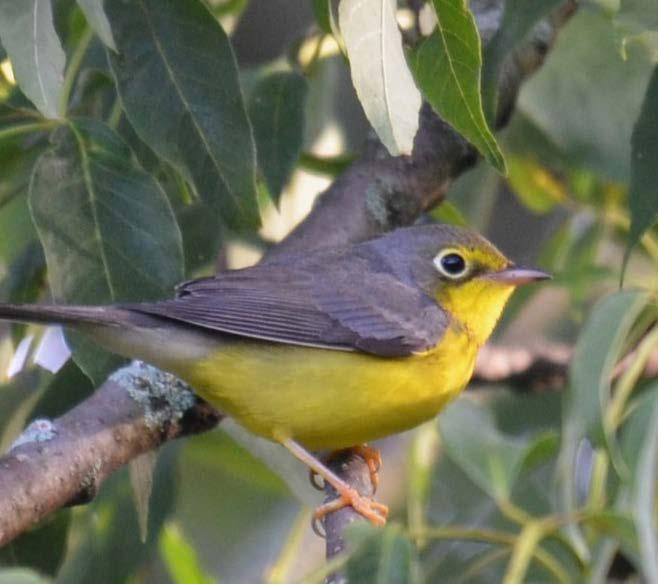
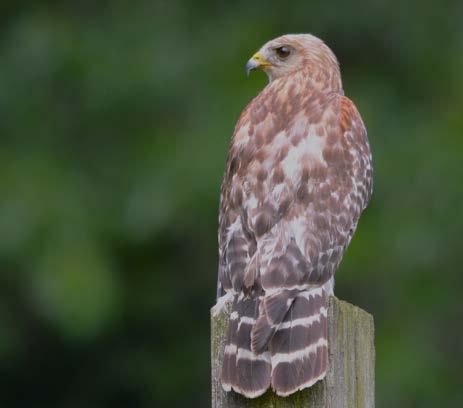

Just to be clear, in this article I’m not referring to birdhouses – houses built for birds, I’m referring to my own house, or my house-to-be, and the birds in the surrounding habitat. All the places I’ve ever lived in have been bird houses; places where the neighborhood’s birdlife was as important to me as any other aspect of the property. Imagine real estate listings that would include a writeup on the bird species inhabiting a prospective property. Now that would be useful. One might read: A three-bedroom Cape Cod with detached garage and a family of crows living in a spacious yard. Lacking such intelligence, as I searched for a new house, it was up to me to determine what sort of bird community I could expect to find in each one I considered.


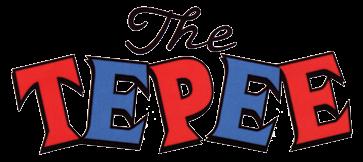



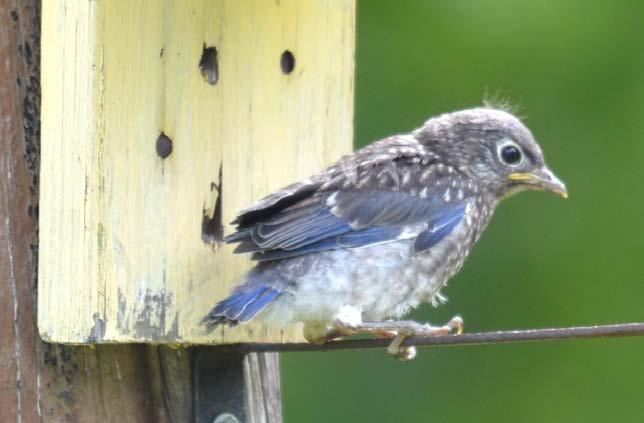
Of course, it was never only about the place I would be moving into. As important was the home I was moving out of, and the birds and other wildlife I would be leaving behind. Since wild animals have no rights in society, their existence on the land is invariably subject to the whim of the human property owner. When you relinquish ownership of a property where you allowed wildlife to have habitat, there is no guarantee the new owner will be similarly inclined and deferential to animal residents. Many years ago, before moving from my New Hartford home, I began weaning the backyard wildlife from the food I had been putting out. I did it over the course of several months. I be-
gan filling the bird feeders every other day, and then a couple of times a week, and then only once a week, and so on, until I was putting nothing out. My objective was to give the birds and squirrels time to find new sources of food. It seemed like the responsible thing to do. That would work fine for those animals that had become dependent on the feeding stations, but the habitat itself was another matter. There was nothing I could do to safeguard the trees and shrubs that provided so many creatures with food, shelter, and nesting places. Shortly after moving and the new family taking up residence, my absolute worst fears were realized. Right away, the new owners cleared out nearly two dozen trees! Were these people coming from Kansas? Did they miss the wide-open spaces and trying to recreate it in Upstate New York? Regardless, virtually all wildlife habitat on that property had been eliminated.
In the preceding decade, that New Hartford neighborhood saw a great deal of development. All the fallow farm fields and woodlots were being converted into housing developments. The loss of our little habitat island was a small part of a greater de-naturing trend. The few








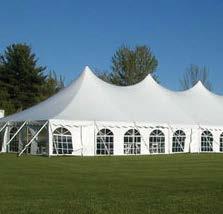
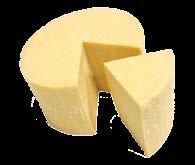
wildlife species that remained would be relegated to the unkempt margins of a newly civilized terrain. For a few years, I occasionally drove by the old house and rarely saw any wildlife. I did sometimes see the crow family that frequented my former yard. They were among the few species that could continue to utilize the degraded habitat and retain it as part of their territory. Of course, I felt guilty each time I saw them. Their lives had clearly become more difficult. Their food resources were not as readily available, and nesting sites, not as plentiful. Crows are highly intelligent birds and are also celebrated for their good family values. A pair will mate for life. Young from the previous year will assist in raising their parents’ new brood. Virtually ev-
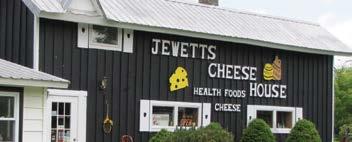
ery suburban neighborhood has a resident crow family, and this has been the case in each of the homes I resided in over the past fifty years.

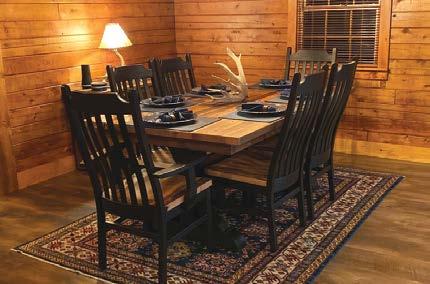



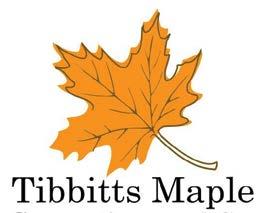
My search for a new house led me to seriously consider several places – some relatively close to my work, and some not so close. All potential candidate homes had some nature component I found intriguing. One Clinton house had a spectacular backyard. Actually, it was quite small, but it bordered a grand floodplain habitat. Also, no neighboring houses were visible, which, for me, was a great plus. It meant I could easily maintain a sense of being in the wilderness. The back porch was elevated, and it reminded me of the bow of a ship jutting out into a sea of greenery. The view from the porch was extraordinary and I imagined spending countless hours manning a spotting scope and watching migrant birds pour in. My realtor agreed with me that it was spectacular, but said I was likely her only client apt to appreciate that type of view. I recall seeing a flock of about a dozen Turkey Vultures flying over the property and considering it a good omen regarding the place. Omens notwithstanding, it was not to be. I had put an offer on the house, but the owners wanted to sell it without contingencies and without inspections. Since the house showed signs of past struggles with flooding, it was a deal buster. Reluctantly, I had to let go of my dream porch. Of course, this was to the great relief of my family, who were sure my naturalist inclinations would trounce all practical consid-
erations.

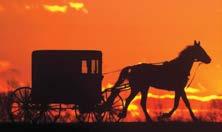




The next house I seriously considered also had an elevated back deck. This one, located in the Waterville area, overlooked a wooded gorge. The neighborhood was rural with a mix of farms, agricultural fields, and woodlots. Although the bucolic setting was an aesthetic appeal, I was not so motivated to be close to active farms. However, I thought I would give the place due consideration. The house itself was underwhelming and would need considerable work to bring it up to minimal standards. While standing on the porch and trying not to notice an old above ground pool that appeared shipwrecked halfway down the gorge, I tried to imagine observing migrating warblers making their way through the surrounding tree canopy. When I walked a few feet over to the right to get a better look at something, my foot nearly went through a gap in a rotten board. That wouldn’t have worried me so much, had there not been a ten-foot drop to the ground. It looked like even the porch had to be redone. As the realtor and I made our way around the outside of the house, the resident cat followed, distracting us with his charm. My partner, who couldn’t be there, and was attending the showing via the phone, thought we were spending more time with the cat than we were looking at the house. In the end, I opted not to evict the cat. He was the lord and master of his yard, and I didn’t want to be the one that deprived him of his kingdom. I strongly considered a couple of houses in
Utica. One was relatively close to my favorite cemetery, where nature abounds among the old gravestones and mausoleums. Another had the Sauquoit Creek running behind it. The one I ultimately put an offer on was on the side of a wooded gorge. I thought that place was likely to have some okay bird action – or as good as one might expect from a suburban-type yard only a quarter mile from Genesee Street. My viewing of the house took place in April, and I literally saw no birds at all as I walked around the house. I heard only a solitary Downy Woodpecker. There was no porch or deck, but windows



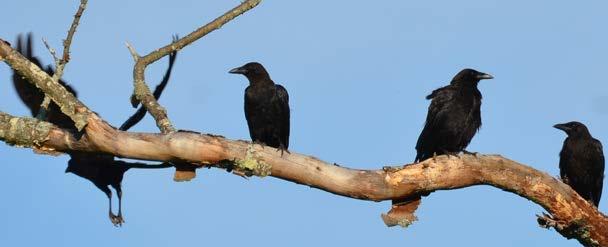
on the back of the house offered a commanding view of the gorge. The layout of the house itself was odd, and the interior of the house would need some serious unscrambling if I was to purchase it. I might add at this point that the housing market has been atrocious – it has clearly been a seller’s market, with house prices inflated to an unprecedented high for this region. Local realtors told me ominous tales of bidding wars between would-be buyers, and of people offering higher than the asking price for houses clearly not worth it. What they said was true. Even though I offered the asking price – a competitor swooped in and offered to buy the house without financing. Fortunately, that was the offer accepted and I wouldn’t have to live in a bird-less house.
The day I needed to leave my rental house was fast approaching and I was running out of time to find something acceptable. Was I going to have to settle for a bird-less house after all? I had learned a few lessons during my eight-month search. The most important one was to act fast. When something came up on one of the real estate aggregator websites, I needed to schedule a viewing right away and then quickly decide about making an offer. I also had to accept that I could no longer expect to find anything in my target area of Kirkland, Paris, New Hartford, or even South Utica. Those markets had become too rich for my blood. I would be concentrating on finding something in the region’s rural outskirts where asking prices were only half-insane. In the first week of May, when an old house near Bridgewater appeared on one of the online sites, I quickly made arrangements to view it. On Google Maps I saw that the property was close to some large, forested tracts, which were likely home to a great number of birds. My first ride to the place took me over a seasonal road that went through miles of potentially good habitat – forest and meadow. I found the old house and outbuildings to be in reasonably good shape, and the setting to be close to spectacular. A gorgeous, forested hillside dominated the view from behind the house, and there were no houses across the street – only an expanse of nature. A neighboring house on one side was not too close, and barely visible through a veil of trees. As for the street – it was as quiet as can be imagined. In fact, while I was there, twenty minutes passed without a single vehicle going by. It was a far cry from the steady traffic on Route 12 B where I was coming from. The first birds I heard on the property were Evening Grosbeaks – an odd species to encounter in mid-spring in most of the Mohawk Valley. As increasingly rare winter residents, these large yellow, black, and white finches are seldom found away from the region’s highest and most remote forested habitat. Twenty-five years ago, Evening Grosbeaks would sometimes stay through the summer and breed in the spruce forests on State lands at Tassel Hill and Brookfield. Perhaps they still did or, more likely, the birds were just passing through. Regardless, the encounter was an indicator for me that the birdlife in this neighborhood might be on the extraordinary side. Indeed, I believed that I had finally found an appropriate bird house.


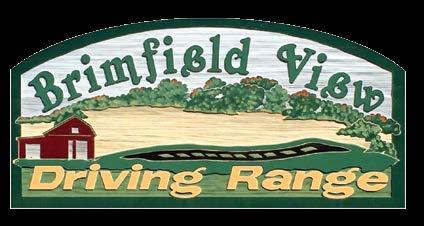


Following the showing, I immediately made an offer on the house. This time no well-healed, would-be aristocrat armed with buckets of cash swooped in to supersede me; and, to make a long story short, my offer was accepted. In early June, and a full month before my house closing, I took a bike ride around what was to be my new neighborhood. I took the










White-tailed Deer were welcomed yard visitors





seasonal roads through the state forest and saw and heard many species I encountered there decades before when I did regular bird surveys there. I found twelve species of warblers alone, including some true luminaries like the Canada Warbler, Mourning Warbler, and Blackburnian Warbler. On my new road I heard the squeaky wheel-type song of the Black and White Warbler. It was hard to believe, but that exotic looking, little zebra-striped warbler was to become my neighbor. In July, following the closing, when we were busily working on the house, I discovered that one of my yard birds was a Blue-headed Vireo. The vireo disappeared as a breeding species in Kirkland more than twenty years before. Several times I heard the understated, short, whistled song of a Magnolia Warbler coming from the woods across the street. The Magnolia Warbler is known only as a migrant through most of the region but does breed in high elevation spruce groves in the northern and southern extremes of Oneida County. In my yard, a pair of Phoebes that had nested under the eaves of one of the outbuildings called as they hawked insects from perches on a rail fence. A female Robin wasted no time in building her nest under a large umbrella left open over an outdoor table. The low croaking calls of Ravens and the plaintive whistles of Broad-winged Hawks emanated from the forest behind the house. Tanagers, Wood Thrushes, and Chestnut-sided Warblers were also heard singing out back. The first evening I was there, I heard a couple of Barred Owls calling back and forth. Most probably, they too were denizens of the hilltop forest. One of the first nights I spent at the house, I was treated to a chorus of Coyotes – the singing virtuosos of the canine family. It doesn’t get much better than that in my book.
As I write this in early September, I have yet to be properly introduced to the neighborhood crow family, but I expect to begin interacting with them soon. I’ve seen them flying over the forest out back and have heard their vocalizations many times. I have put peanuts out for them, but so far, they haven’t discovered them. Once they do, I will be able to resume observing the behavior of one of my favorite bird species. Indeed, they and their wild compatriots can rest assured that while I own the property, their right to the habitat will be honored. I look forward to many seasons of interesting wildlife encounters in my new location and from my new bird house. •
Matt Perry is Conservation Director and Resident Naturalist at Spring Farm CARES in Clinton. He manages a 260 acre nature preserve which is open for tours by appointment. His nature videos and photos can be found on the Spring Farm CARES’ Nature Sanctuary Facebook page.


Stocking Hats, Mittens, Gloves, Headbands, Over “50” Styles of Alpaca Socks, Fur Slippers, Animals, Rugs & Pillows, Sweaters, Jackets, Vests, Sport Bags & more.


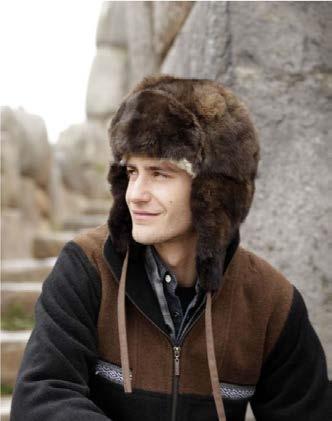





Alpaca is up to 5X Warmer than wool, Softer than Cashmere and Smoother than Silk. Alpaca breathes better than any other Natural Fiber, and is “Naturally” Water & Odor Resistant. With Alpaca Socks your feet will be more comfortable, drier, and less fatigued. PLUS, Alpaca is Hypo-Allergenic & Highly Anti -Microbial.





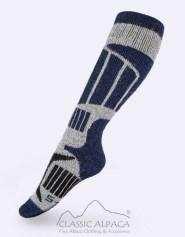






















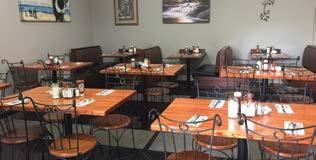








































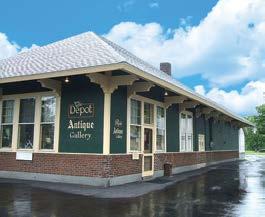
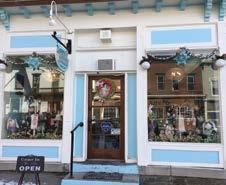




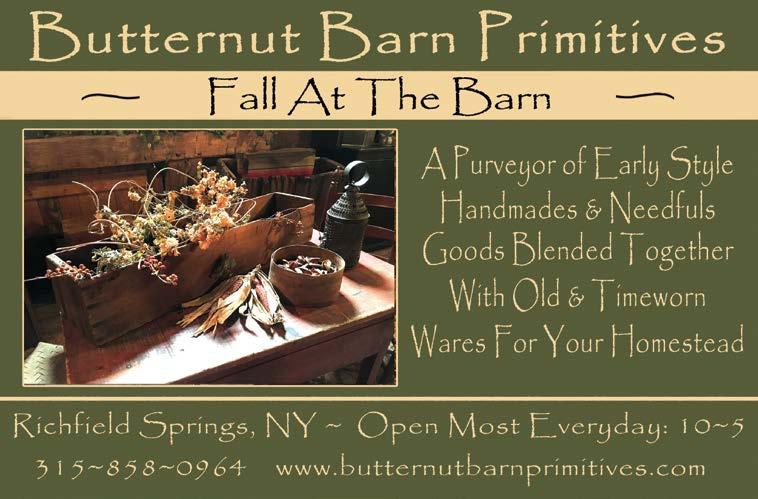




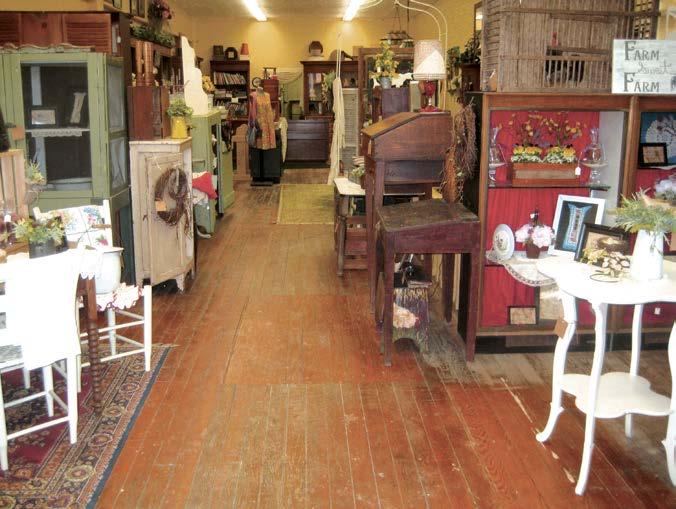


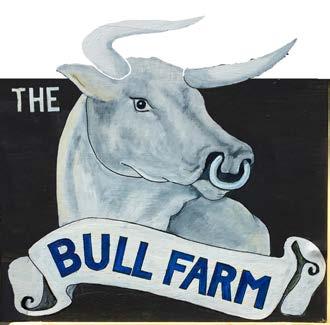
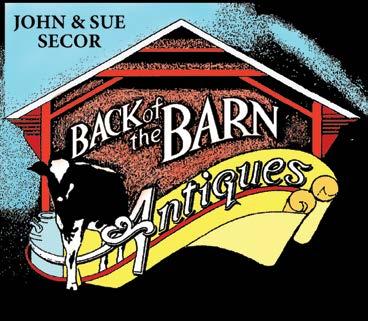














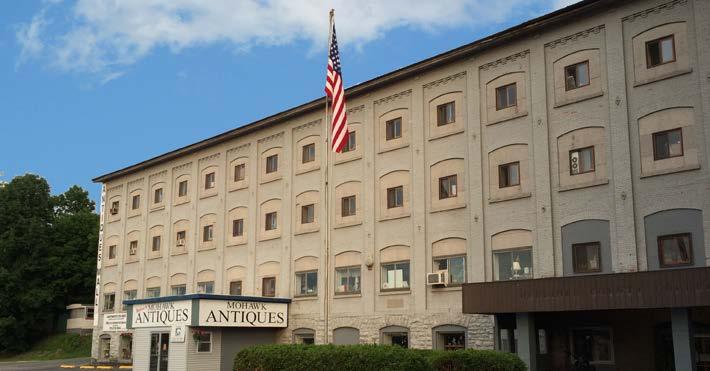




The forest in October undergoes major changes, both above and below the soil. For deciduous trees, photosynthesis halts, and their energy becomes sequestered in their roots – not to be drawn on again until spring. As the chlorophyll in their leaves breaks down, and as they fall to the ground, these former solar collectors begin their new life as soil protectors. Insects and other agents of decomposition will be protected beneath a layer of leaf litter that may be several inches deep. Among the insects taking refuge beneath the leaves will be many moth species, which overwinter as pupae inside silk cocoons. The world beneath the leaves squirms with activity until cold temperatures force much of that life underground. Beetles, ants, millipedes, springtails, and worms are among the visible fauna, but there are also many other organisms too small to perceive with the unaided eye. Predators of this realm include spiders, centipedes, and the occasional salamander.
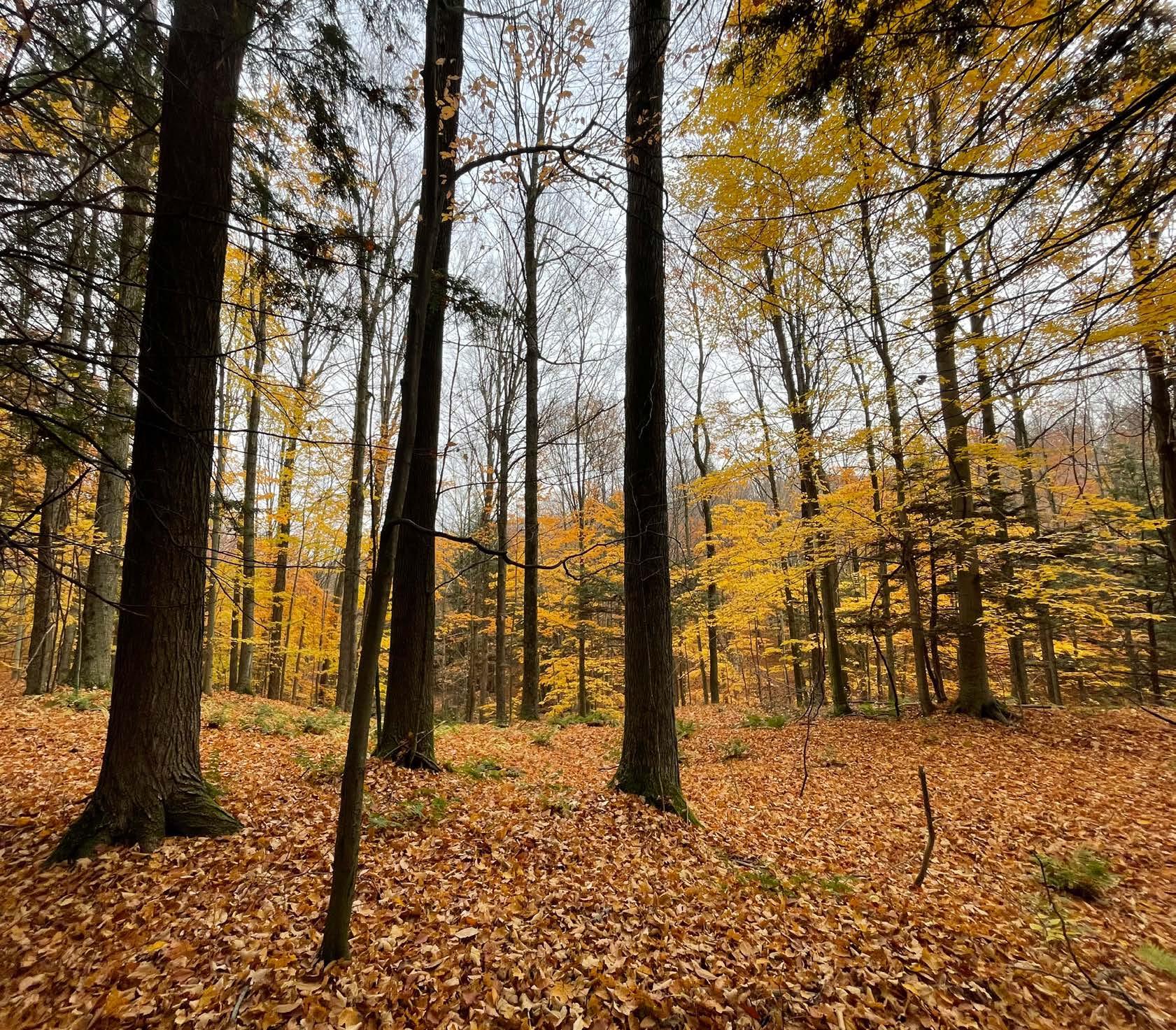
Aesthetically, there is nothing to match the beauty of forest trees in October. Exhibiting a wide palette of color, the trees create a larger-than-life spectacle; one difficult not to appreciate even by the most cynical observer. It can be looked on as the grand finale of the growing season – celebrated with 70-foot-tall multi-colored bouquets. In the Mohawk Valley, residents are geographically well-placed to experience particularly colorful fall shows.
This is due to the domination of our forests by maple trees – primarily Sugar Maples and Red Maples, and their tendency to turn brilliant shades of orange, red, and yellow. The prevalence of ash trees (mainly White Ash) in Central New York also contributes to the color we see in fall. While the vibrant hues of the maples could be likened to oil paints, the more muted tones of the ash more resemble watercolors. It always astounds me the array of colors the foliage of ash trees can produce. Individual trees belonging to the same species may turn gold, orange, red, copper, peach, purple, or brown and all gradations in between. Indeed, ash trees are the unsung heroes of peak fall foliage in Central New York. Unfortunately, the ashes are quickly disappearing from the region as they fall to an exotic insect pest –the Emerald Ash Borer. The insect has been making its way across the Mohawk Valley, effectively destroying most ash trees in their path. It is believed that in a few short years we may have few living Ash trees left. It is a hard species to lose due to its importance as a habitat provider. It is one of relatively few species that comprise the forest canopy. Ash seeds, called samaras, are an important part of the “mast” produced by our forest (Mast refers to the combined output of seed and nut-producing trees in a forest). Many wild

animals including many finch species seek out and consume Ash samaras.
The forest floor, particularly in the latter half of October, becomes a complex mosaic of fallen leaves. Even as the bright colors of the leaves fade, the variety of leaf shapes, and their juxtaposition, can reveal much about a forest. Obviously, the forest floor in a woods dominated by oaks and hickories will have a much different appearance than the forest floor in a beech and maple dominated forest. At the nature sanctuary, in our oldest reforestation field, the deposition on the forest floor represents a much more varied tree makeup than in the area’s more typical forests or woodlots. Leaves of six different oak tree species, and those of Tulip Trees and Sycamore, are layered along with the maples, ashes, Black Cherry, and Basswood leaves. The presence of the leaves of Black Gum and Kentucky Coffee Tree are enough to throw even the keenest tree identifier off their game.
While our attention is understandably di-




verted by flamboyant fall foliage, the mass exodus known as bird migration continues from the previous month. Canada Geese noisily traverse the sky. On days when the winds are right, multitudes of flocks may pass over. Duck species are also moving in October; although, unlike the geese, which have no qualms about flying over open country, the flight paths of ducks tend to track closer to waterways. Typically, we can see which waterfowl species are moving based on which are stopping to rest and feed on the region’s wetlands and lakes. Songbirds are moving too. Although most of the neotropical songbirds including the warblers, tanagers, and flycatchers vacated the valley in September, most blackbirds, Robins, and sparrows leave in October. Unlike the neotropicals that migrate by night, most songbirds are daytime travelers, so their passage can be seen and fully appreciated. While blackbirds travel together in flocks of a few dozen to many thousands of birds, Robin flocks are much smaller, often with only a handful of individuals. Like the waterfowl, these songbirds must make frequent stops to rest and refuel. The best places to encounter them are berry-laden thickets, overgrown orchards, and forest edges. There is much to enjoy about the month of October in nature. However, it does portend a profound shift between seasons and the first stage in the inexorable march towards winter. •





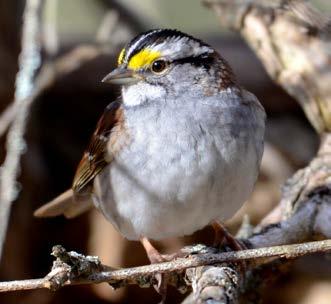

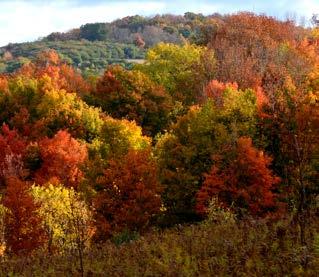






Overlooking the picturesque Erie Canal in North Utica, Portofino Restaurant and Events (PRE) provides a culinary journey to the Italian Riviera in a seafaring atmosphere of classic Italian charm combined with a modern touch.

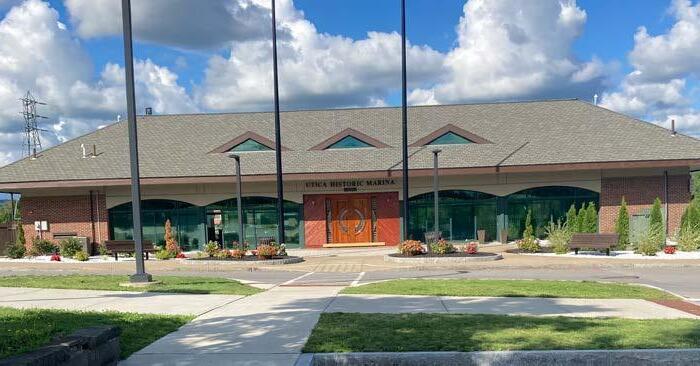
This exciting new dining establishment is modeled after Portofino, Italy: a fishing village and trendy upscale vacation destination prized for its delicious seafood, gleaming yachts, pastel-colored homes, and sparkling azure water.
“What my family wanted to do was bring the Portofino experience here,” said Grant Roser PRE Co-owner and General Manager of Roser Communications Network. His pride and enthusiasm are apparent.
On PRE’s outdoor patio, guests enjoy their meals in the graze of a gentle breeze and a backdrop view of a bedrock waterfall that burbles in accord with the tranquil setting.
Young ladies are celebrating a bon voyage over Signature Drinks and appetizers: Bruschetta Aglio (garlic bread), and Antipasto Di Mare (seafood). “Cheers!” they say in chorus with clinking stemware.
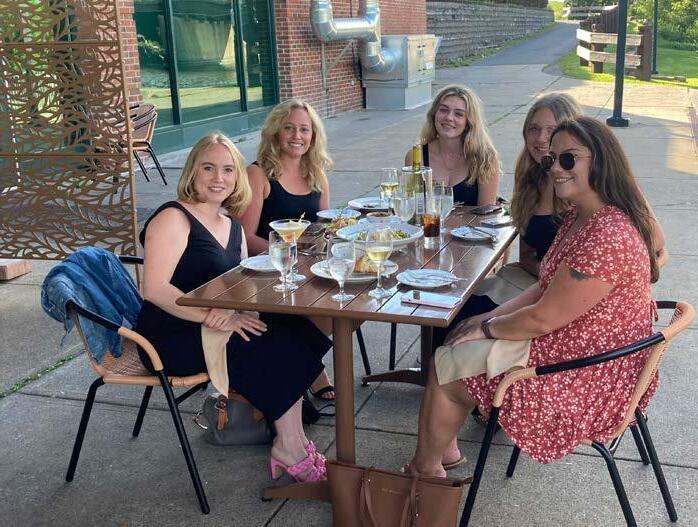
“We like the scenery and eating outside,” said Philip Bruno. He and his wife, Pamela Bruno, enjoy Bietola Al Forno (beets), Capesante Di Mare (scallops), and Chicken Riggies. Pamela Bruno said, “My beets and scallops were outstanding, and the presentation was on point.”
The same lovely scenery can also be admired inside where Phil and Betty Montana are seated alongside the picture window. Comfortably settled in gold velvet chairs, the Montanas marvel at the swirling colors of turquoise, green, and orange beset in the marble tables and floor. “The decor is beautiful,” said Betty Montana. Credit for the elegant motif goes to Roxanne Roser, Grant Roser’s mother.
Betty Montana added, “I thoroughly enjoyed the squash soup with hazelnut cream.” Her husband Phil had Veal Portofino. “It was excellent,” he said.



With 1930s music softly playing in the background, Roser said, “One of the neatest things we’ve done so far is deliver dinners yachtside to some very nice people from Miami.” These out-of-town guests enjoyed sampling popular local foods for the first time from PRE’s Traditional Utica Fare section of the menu.
“We love our staff,” Roser said as he introduced his personnel. Server Anna Pettersen smiled and responded, “They are very good to us here.” She then dashed
off to recite the vegan, vegetarian, and children’s menu to a young family.
Seated below the wave wall, two dessert lovers dither when choosing their sweets: Chocolate Pearl; Vanilla Bean Panna Cotta; Tiramisu Cheesecake; Almond Praline Cake; or Lemon Meringue Pie.
“We also have Sunday brunch buffets that draw a nice crowd,” said Roser.
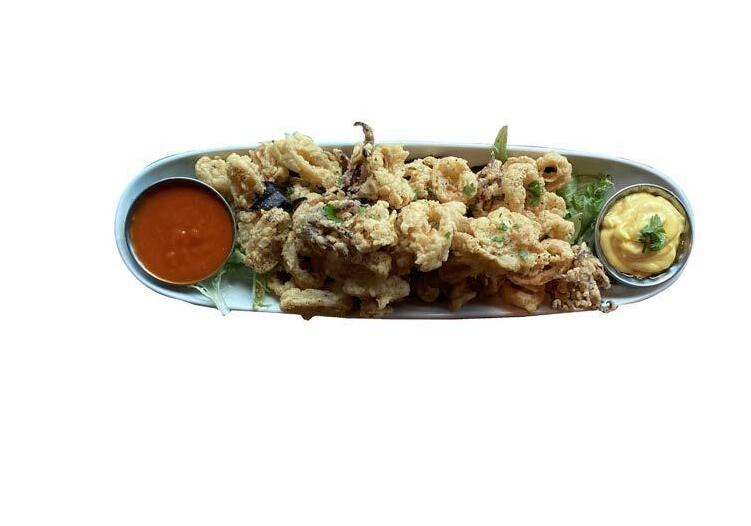





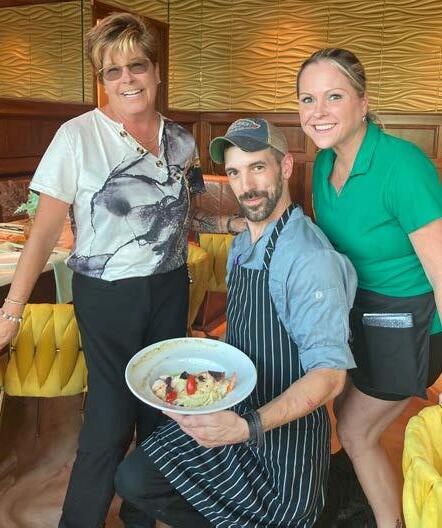
As the climate cools, Roser will host special events upstairs in the banquet room, which has a large dance floor and a seating capacity of 100.
Soon, construction will begin for an 80 x 20-foot mezzanine patio with infrared heat so more customers can dine outside in comfort next season.
At Portofino Restaurant and Events, guests enjoy the diverse flavors of Italy, opulent interior designs, and beautiful scenery of Italy without leaving the beloved city of Utica. •








16 Harbor Lock Road, Utica



Open for dinner: Tuesday through Thursday: 4-9pm, Friday and Saturday 4-10pm Sunday Brunch: 10am-3pm portofinoutica.com

Maryann Vanderpool-Imundo is a poet and freelance creative writer. She is an active member in the Oneida Chapter National Society of The Daughters of the American Revolution (DAR). She enjoys history, writing, public speaking, ballroom dancing and line dancing.






Answers found in the pages of this magazine! Solution will appear in next month’s issue
2. Better than Mrs. Butterworth. (2 words)
6. The Village of Clinton’s art center, for short.
7. Add some color to your home decor this season, visit Added ____. See page 21.

8. The name of both an asteroid and the name of the Nasa spacecraft being launched this month to explore it.
11. Woman instrumental in the development of the Griffiss International Outdoor Sculpture Park and 2023 inductee to the Oneida Co. Historical Hall of Fame.
14. ____ the river and through the woods...
15. This creek still flows under Varick Street in Utica and lends its name to a pub above.
16. ____ here nor there.

1. Local tree that has fallen victim to exotic borer insects.
3. Celebrated in Inlet the first Saturday in Octo ber. (3 words, 1st abbreviated)
4. In China, bats symbolize this.
5. Do this to lavender and hydrangea in the fall.
8. Village on the Italian Riviera and new restau rant overlooking the Erie Canal in Utica.

9. Yee-___! Ride ‘em cowboy!
10. The kind of house writer Matt Perry lives in.

12. You can buy alpaca socks at Paca Gardens or buy this to make your own.

13. This farm to table is moving from Genesee to Main: The ___ & The Cook.

Cullen Pumpkin Farm
Picked pumpkins & gourds. Corn maze, wagon rides, and pumpkin train!
Utica Zoo Mobile Oct. 9, 12-2pm

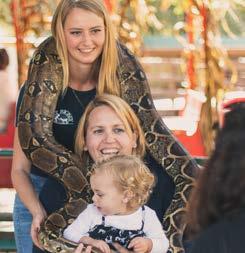

Open daily 10am to 6pm (315) 867-3878
587 Cullen Rd., Richfield Springs cullenpumpkinfarm.com
Farmer’s Museum
Ghost Tours
Hear stories of mysteries and ghostly happenings. (Ages 10+)
Oct. 13 &14, 20 &21, 27 & 28
Six tours nightly from 5:30pm Reservations required, call (607) 547-1456 or online: farmersmuseum.org

Cooperstown
Bringthekidsfortrick-ortreating:Sat.,Oct.28th1-4pm

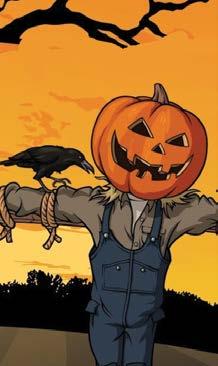
21st Annual Remsen Depot
Corn Maze
Annual corn maze, hayride, and snack bar.
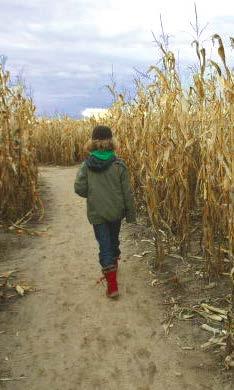
Weekends 12-5pm thru Oct. 8th
Flashlight Nights: Sept. 29 & 30, Oct. 6 & 7, 6-8pm, BYO flashlight
Adults: $8, Under 12: $6 (315) 831-3409
10613 Depot St., Remsen remsendepot.com
Fort Rickey Fall Fun Days
Pumpkin painting, corn maze, tractor rides, arts & crafts, Play Land, food and treats.


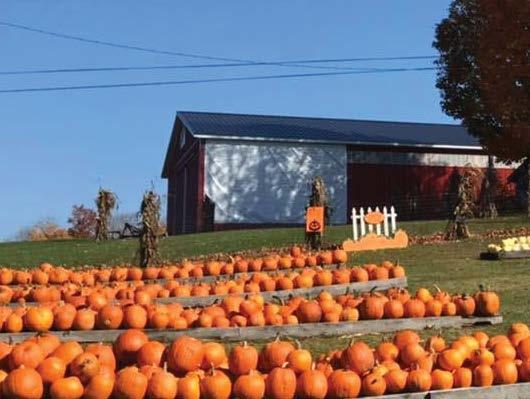
Weekends 10am-4pm through Oct. 29th
(315) 336-1930
Rome-New London Rd., Rome fortrickey.com
Pumpkin Junction
Pumpkins, Halloween store, Cornfusion Corn Maze
Open daily: 9am-8pm (315) 794-4604
2188 Graffenburg Rd., Sauquoit pumpkinjunction.com

1175 Hillsboro Road, Camden • 245-0104 • www.cackleberrycastle.com
1175 Hillsboro Rd. 245-0104 www.cackleberrycastle.com
OPENING: THURS. SEPT. 17TH 4pm
NEW HOURS: THUR’S & Fri’S 4-9 SAT’S 10-9 SUN’S 10-8
HOURS: Thursday & Friday: 4-9 Saturday: 10-9 Sunday: 10-8
COLUMBUS DAY 10-8
COLUMBUS DAY 10-8
RESERVATIONS ACCEPTED FOR FIELD TRIPS/BUS TOURS FOR THURDAYS & FRIDAYS: 10-4
RESERVATIONS ACCEPTED FOR FIELD TRIPS/BUS TOURS FOR FRI’S 10 -4
FREE ADMISSION & FREE PARKING
HAYRIDES, BOUNCE HOUSE, MS. PUMPKIN, ANIMALS, KIDS PLAY AREA, PUMPKINS, SQUASH, APPLES, CIDER, CORN STALKS, GOURDS,
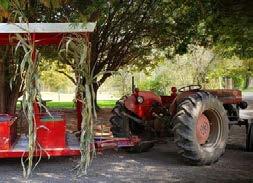
HAYRIDES, BOUNCE HOUSE, MS. PUMPKIN, ANIMALS, KIDS PLAY AREA, PUMPKINS, SQUASH, APPLES, CIDER, CORN STALKS, GOURDS, CONCESSION STAND, FUDGE HOUSE, SPOOKY WALK THROUGH CORNFIELD, POPCORN PALACE, HALLOWEEN DISPLAYS, TOTEM POLES & NOVELTY ITEMS

Live Music under Pavillion, check our facebook for events!

Hayrides, talking pumpkin, displays, concessions, bouncy house, family cornfield walk. Open through Halloween:



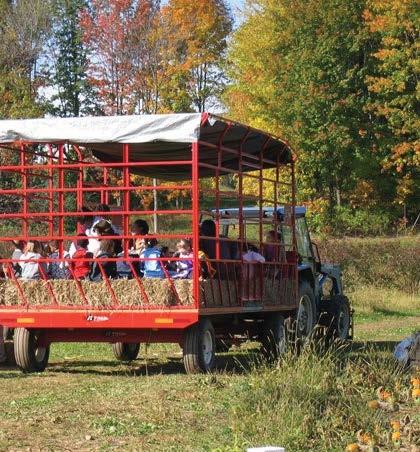
225-1638 cackleberrycastle.com
Halloween and harvest celebration with trick-or-treat stations, food trucks, vendors, live entertainment and Twisted Fairy Tail Trail.


October 21 & 22: 10am-3pm! (315) 738-0472


1 Utica Zoo Way, Utica uticazoo.org



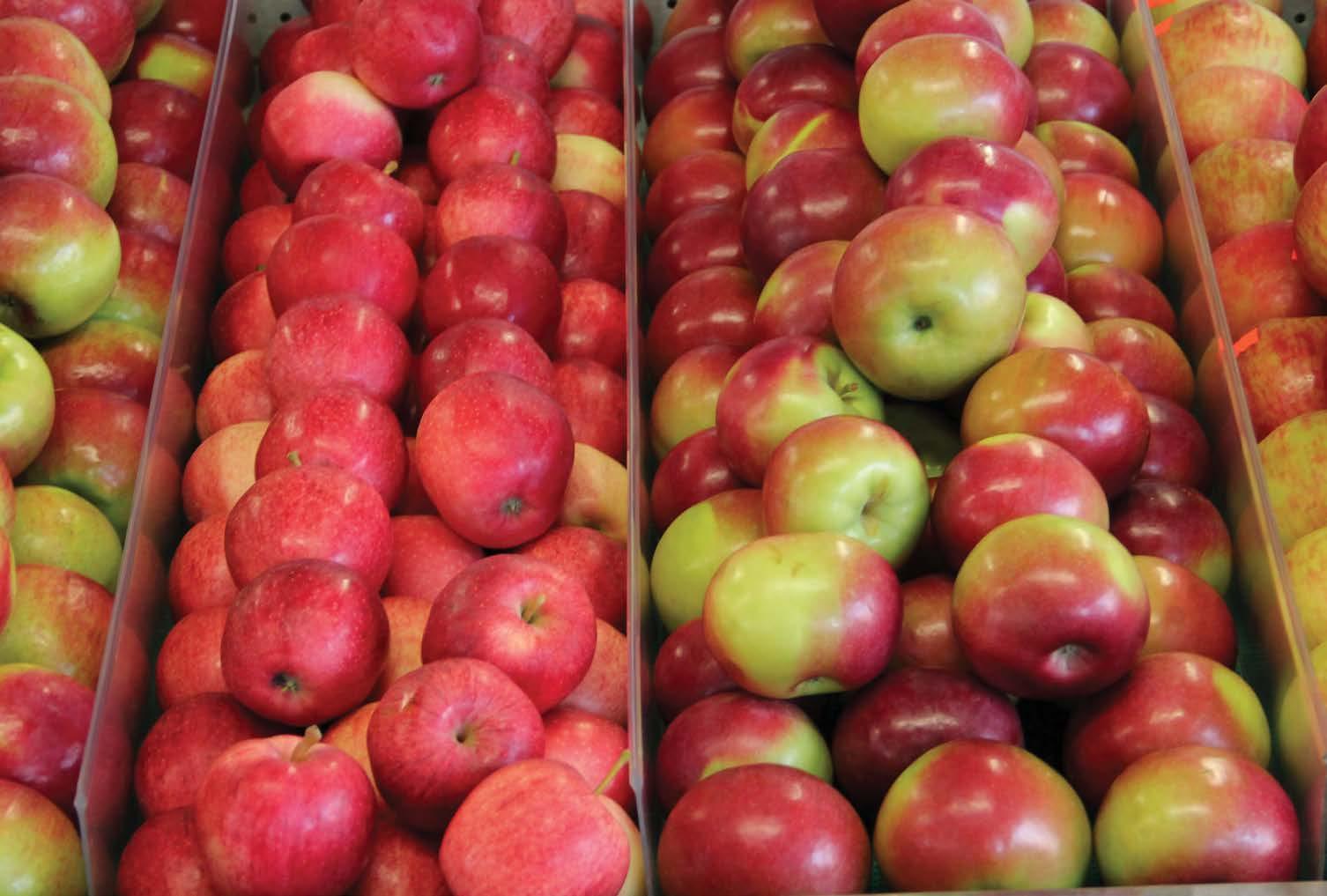



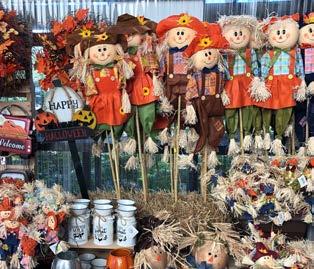



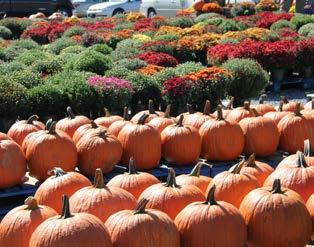










Last month we took a look at the OSIRIS-REx mission to asteroid Bennu and its daring sample return efforts. Although that adventure is winding down, another one is about to begin. A new spacecraft is scheduled to launch on October 5th to explore an asteroid named 16 Psyche, an extremely rare world in the Asteroid Belt. Meet NASA’s Psyche mission!
What is so special about Psyche? Of the estimated two million asteroids in the region between Mars and Jupiter, fewer than 100 are metal-rich and classified as M-type. Psyche is the largest of that unusual group. Discovered in March, 1852 by Italian astronomer Annibale de Gasparis, it remains a place shrouded in mysteries with a long list of unanswered questions.
Psyche is irregular and potato-shaped, about the size of Massachusetts, and its orbit takes it between 235 million and 309 million miles from Earth. Based on studies using radar and other observations, scientists believe it could be the remnants of the nickel-iron core of a planet that failed to completely form in the early solar system. Another theory suggests it is a rubble pile, built from collisions with other asteroids that delivered metal and rocky components.

But the fact is, no one actually knows what the asteroid looks like, its mass and gravity field, how it formed, or how much
metal, rock and other materials it contains! The only thing that is certain is that scientists expect many surprises when the spacecraft arrives at Psyche.
The mission is the first to visit a metal-rich world, and will gather data about the asteroid to meet its ambitious science goals and objectives. They include discovering if it is the core of a planet or unmelted material, determining its age and evolution, evaluating its composition, and mapping its structure and topography. Those efforts will likely lead to new discoveries, insights about the formation of our own planet and its molten core, and shed light on how the solar system evolved starting 4.5 billion years ago.

The spacecraft, also named Psyche, is equipped with three sophisticated science instruments, massive solar arrays and a unique propulsion system. Overall, the spacecraft is about the size of a singles tennis court. The main body that houses the instrument suite is 16 feet tall and 7 feet wide. The first instrument includes two identical cameras to create images, determine the composition of minerals, and create detailed maps of surface features. The second is a gamma-ray and neutron spectrometer to detect and catalog the elements found on the surface. The third is a magnetometer to search for a magnetic field and, if found, evaluate it
to get clues about the asteroid’s formation.
Each of the two solar arrays is 37 feet long and 24 feet wide. They provide electrical power to all systems during the entire mission. To travel to and orbit the asteroid, the spacecraft uses solar electric propulsion. Four extremely efficient thrusters, powered by the solar arrays, will continually accelerate and expel ions of Xenon propellant (stored in onboard tanks). This causes a very gentle push of the spacecraft that slowly increases its speed, eventually reaching almost 124,000 miles per hour!
Liftoff is scheduled for October 5th at 10:38 a.m. from Launch Complex 39A at Kennedy Space Center, with live coverage on the www.nasa.gov/live website. A powerful SpaceX Falcon Heavy rocket will launch the spacecraft, sending it on a 2.2 billion-mile journey. It arrives in July 2029, a highly anticipated time when we finally get a first look at Psyche, and the exciting 26-month science mission begins. What surprises will mysterious Psyche have in store for us?
Wishing you clear skies! •
Hanny’s Voorwerp. Image Credit: NASA, ESA, W. Keel, Galaxy Zoo Team







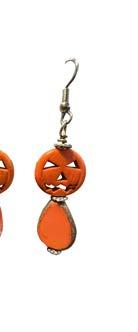

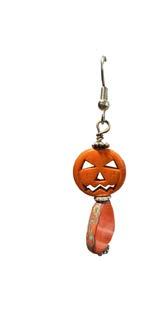



JudithSnedekerJaquithSoloShow
Through October 27, 2023
Cooperstown Art Association Main St., Cooperstown, NY (607) 547-9777 cooperstownart.com

VictorLenuzzaSoloExhibition
Through November 9, 2023
4 Elements Studio Satellite Window Gallery, 131 Genesee St., Utica • 4elementsstudio.org
TaniaAlvarezandSydneyEllison: PrattMunsonAlumniExhibition

Through October 26, 2023
The PrattMWP Gallery at Munson 310 Genesee Street, Utica, NY (315) 797-0000 • mwpai.org
ACabinetofCuriousMatters: WorkbyCallahanandWhitten
Through December 31, 2023
A visual dialogue between two artist interested in dreams, and antique scientific and medical instruments.

Fenimore Art Museum
5798 Hwy 80, Cooperstown, NY (607) 547-1400 • fenimoreartmuseum.org





Through November 9, 2023
Reception: Sat., October 21, 1-4pm



Kirkland Art Center 9½ E Park Row, Clinton, NY (315) 853-8871 kacny.org
2023QuiltsUnlimitedExhibition
October 7 – December 2, 2023
View
3273 Rt. 28, Old Forge, NY (315) 369-6411 • viewarts.org
 Detail from “Calm Before the Storm,” a painting by Victor Lenuzza on display in a solo exhibition of his work at 4 Elements Studio’s Satellite Window Gallery at 131 Genesee St., Utica
Detail from “Calm Before the Storm,” a painting by Victor Lenuzza on display in a solo exhibition of his work at 4 Elements Studio’s Satellite Window Gallery at 131 Genesee St., Utica








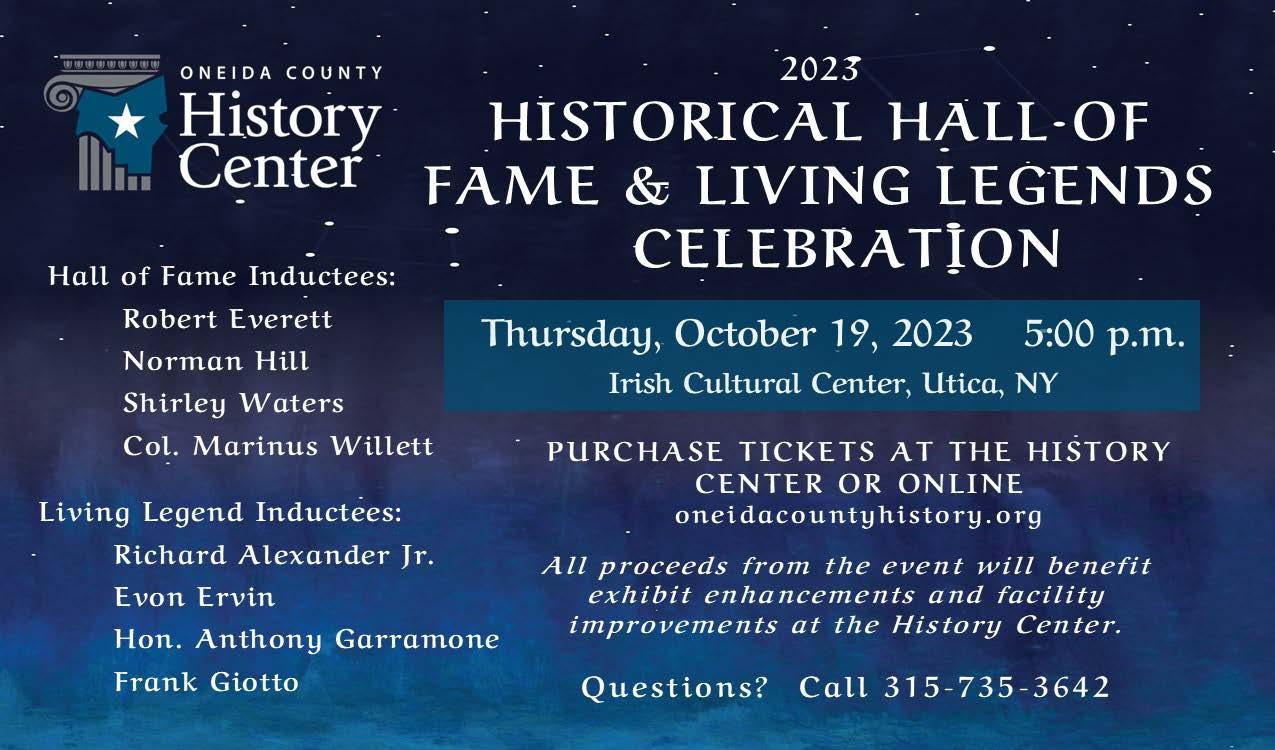
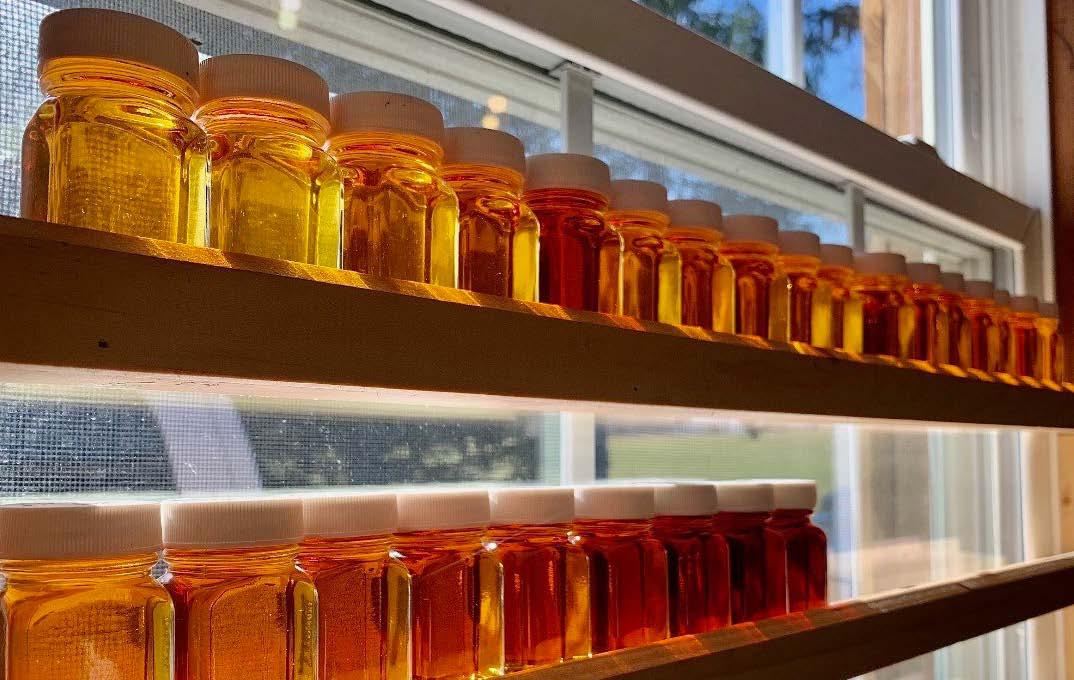

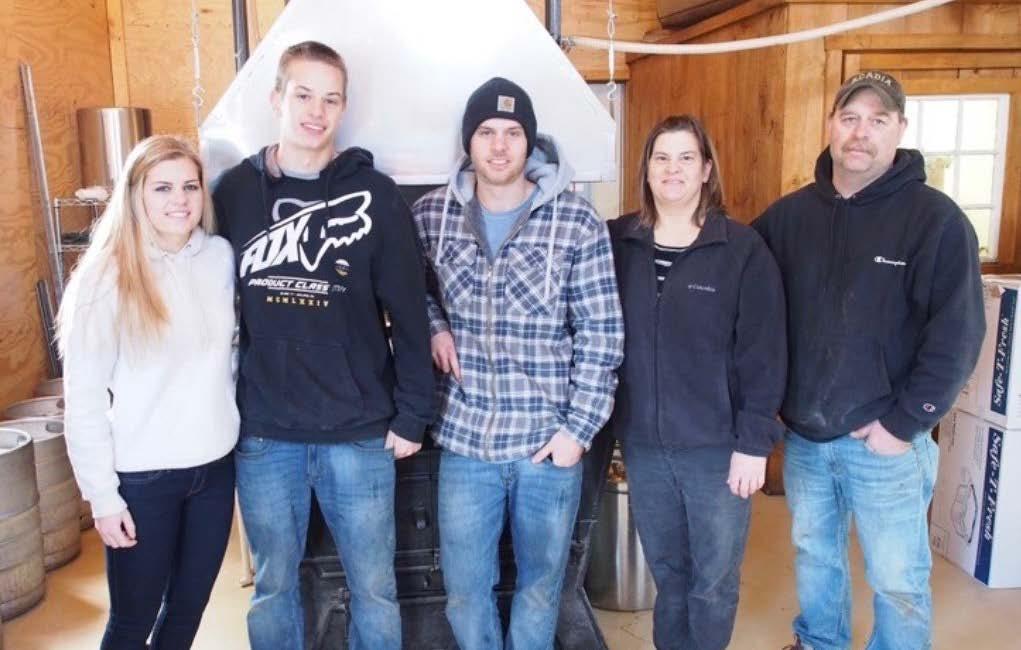



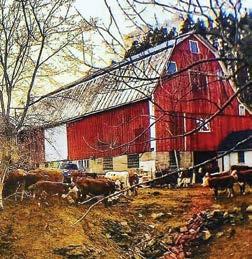




True story: I grew up on Log Cabin and Mrs. Butterworth’s pancake syrup. Sad, I know! These unnaturally thick, overly sweet concoctions are a far cry from the real deal. But growing up with an imitation, I was none the wiser.
Until, of course, I met (and tasted) the genuine article.

My husband recalls that his mother would make “depression syrup” to top their waffles and French toast—a thin, watery mixture of brown sugar and water. A tiny bottle of real maple syrup sat tucked away in the cupboard, reserved for the rare special occasion or a light drizzle over his dad’s ice cream.

Of course, my husband and I grew up in the Midwest, far from New York and Vermont, the epicenter of US maple production. But here, in Central New York and the Mohawk Valley, we are blessed with far greater access to the nectar of the gods: REAL maple syrup.
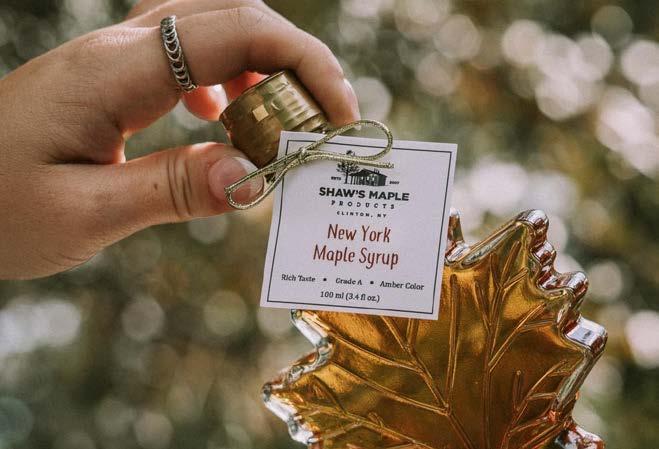

Real maple syrup, of course, starts as sap from sugar maples (and sometimes black and red maples) tapped in late winter. As the days imperceptibly start to lengthen and daytime temperatures inch above freezing, hardy folk head out into the snowy woods to prepare for a harvest like no other.
The gathered sap is boiled down until it is a dark, golden hue, concentrating the sugars and the flavor. Again, it takes hardy folk to tend the fires for days on end to achieve the desired result.
Carol and Maggie Shaw of Shaw’s Maple Products are two such wonderful, hardy folk. I have known Carol for over 10 years, having been vendors at many farmer’s markets and festivals together. I’ve watched her daughter, Maggie, grow up alongside my own girls, and love that they, too, are a small family business. And their maple syrup is served not only at our breakfast table but also used to flavor our farm’s gelato.
Carol recently shared with me how her family started the business 16 years ago:

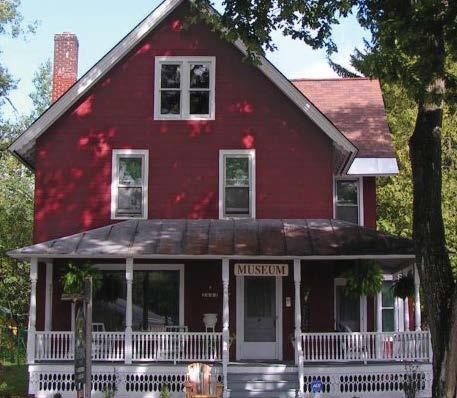
When Maggie was nine and in Girl Scouts, the troop took a tour of the maple sugarhouse at VVS High School in Vernon, NY. We learned so much that day about making maple syrup, we decided to try it ourselves as an fun, educational experience with the kids.
That first year, we tapped eight trees. We used plastic milk jugs hung from each tap to collect the sap. It was the kids’ job to empty the jugs every day when they got off the school bus. Some days, the jugs would be overflowing by the time they got home.
We built a small fire inside a ring of stones and watched the gathered sap boil as the kids played. We quickly learned how time-consuming the process really was. That first year, we may have made a single quart of syrup after all that work!

Over the next few years, we grew slowly with the realization that our “hobby” could become a small business. In 2010, we moved into a large sugarbush located on my brother’s dairy farm in Madison and installed blue tubing that connects the trees together like a spider web. The sap flows downhill and collects in one central tank, which we truck back to our sugarhouse in Clinton.
We have since attended many maple school conferences to learn about equipment, tools, and processes used by other sugar makers. Networking with others has proven to be invaluable to our success.


The entire family is involved in the business: Curt, Carol, Owen, Maggie, and Tyler, along with many other family and friends when help is needed.
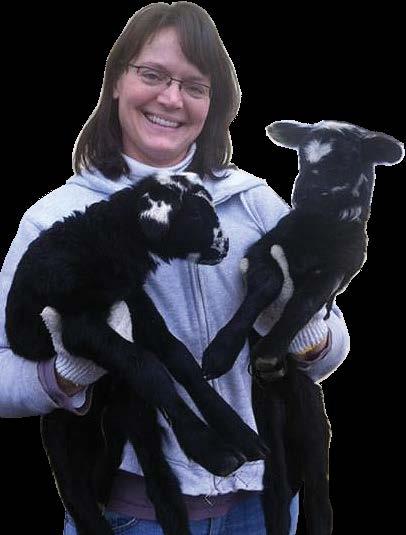
This venture has taken us on an amazing journey and has taught us so much. It has taught us what hard work truly is. As a family, we have enjoyed learning and sharing our expertise with customers. Being able to share what we do and to see the appreciation by others makes us both humble and proud.
You can find Carol and Maggie and Shaw’s Maple Products at the New Hartford, Clinton, and Old Forge farmers’ markets during the summer months, weekend festivals, and a number of small retail shops in the area. Their retail store is located at 7945 Maxwell Road in Clinton and is open year-round. For more information, visit shawsmapleproducts.com. •



Apples by the bushel and peck, peppers by the bushel, tomatoes for canning, pears, seedless concord grapes, cauliflower, broccoli, and cabbages!




Shirley Kessinger Barnard was born in Syracuse on October 18, 1921, to Bradley and Margaret (Kessinger) Barnard. Her family moved to Rome when she was 13. She attended Rome Free Academy and graduated from Syracuse University with a Bachelor of Fine Arts in painting degree in 1943. She was a painter, a newspaperwoman, and a dedicated member of the community. Shirley said her greatest achievement was sharing life with her husband George and their five children Peter, Stephen, Nancy, Kristin, and Dean.

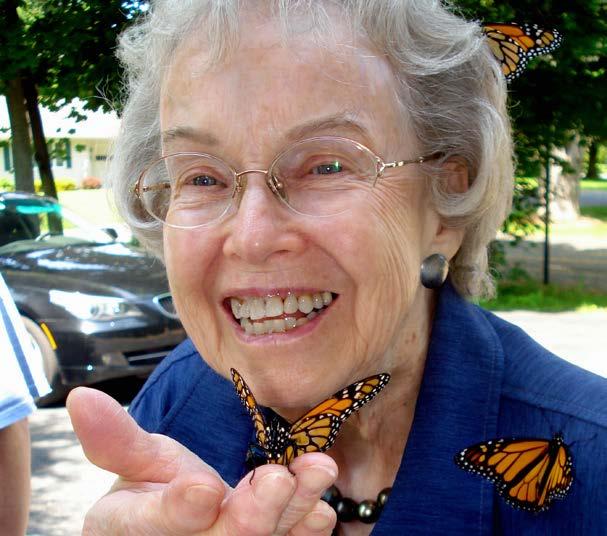
Shirley married George B. Waters on September 23, 1943, when he was home on leave from basic training at Fort Benning, Georgia. They had been engaged while they were both finishing their studies at Syracuse University. She returned to Rome when George’s anti-tank company was transferred to Europe during WWII. She joined George in Salzburg, Austria during the post-war occupation becoming a de-facto den mother for the 125-person company. Returning home, George joined the Rome Sentinel. Shirley learned the newspaper business from her mother, father, and maternal grandfather, Albert R. Kessinger. During the years when George was publisher, from 1964 until 1993, Shirley served as vice president and secretary and was a full partner in all major business decisions.
In 1987, Shirley and George received the first Saul Lazovik Service to the Arts Award for “unselfishly giving of their time, effort, and financial support to the arts.” In 1995, they were selected as recipients of the John Peter Zenger Award for Achievement in Publishing as recognition for their outstanding contributions to the industry. They spent their last years at Masonic Care Community in Utica, until

George’s passing on July 2, 2018. Shirley passed away on December 23, 2021. Shirley was a talented artist, creating more than 400 paintings in diverse media. She exhibited her work in many juried shows and her works are in numerous collections. Shirley was also a member of the committee organized in 1979 to restore Utica’s Stanley Theatre. Renowned cellist Mstislav Rostropovich, and his wife Galina Vishnevskaya performed a benefit concert that generated the seed money that began its rejuvenation. After the closing of Griffiss Air Force Base, she assisted Smith Post American Legion in persuading the Air Commander to leave a decommissioned B52 bomber as a static display. Shirley was instrumental in the development of the Griffiss International Outdoor Sculpture Park and the Rome Art and Community Center.

Shirley received many awards including the Woman of Merit Award for Art, the SUNY College of Technology Distinguished Service Award, the YMCA Salute to Women Award for Art, The Rome Area Chamber of Commerce, Cultural Vitality Award, Rome Rotary Club’s Roses for the Living Award, Rome/ Utica/Herkimer Chamber of Commerce Athena Award, and the YWCA of Utica selected her for the Salute to Women Award for distinguished service. Throughout her life, young people especially sought her guidance and sympathetic ear and returned her kindness with love and friendship. Shirley will be inducted into the Oneida County Historical Hall of Fame on Thursday, October 19, 2023, for her service to our community and her achievements in Oneida County history. •

1608 Genesee St, Utica (315) 735-3642










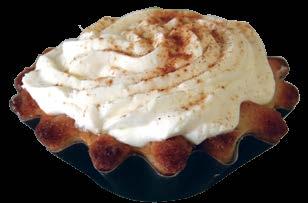




Monday-Friday: 10-4 www.oneidacountyhistory.org



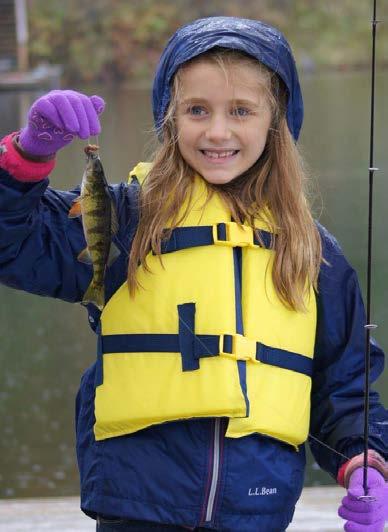
 story and photos by Gary VanRiper
story and photos by Gary VanRiper






Welcome to Mohawk Valley Living’s Fall Family Fun issue!
Many of you know I write The Adirondack Kids® series of books for young children with my son, Justin. Twenty books in twenty years, with a new volume currently underway.
What you may not know is, just over a decade ago, a special event for families was launched in the Adirondack hamlet of Inlet, our “home” away from home. The region serves as the epicenter for the main characters in our series—best friends who have multiple adventures here and throughout the Adirondack Park.





The event is held every year on the first Saturday of October. Adirondack Kids Day™ was established to encourage young people to set aside their electronic devices to get out and explore the great outdoors.
Some features have changed over time, but there are popular mainstays like the French Louis Fishing Derby, where young people, with their parents, get to drop a line into Fifth Lake.
Mark Manske from Adirondack Raptors is back with his birds of prey, but we’re never sure which species will appear during his engaging presentation. Mark is also writing a series of

books for young people and will join us at the library with several other authors of children’s books set in the Adirondacks.

KIWANIS in the Central Adirondacks, which is all about kids, has always been the main sponsor of what has become a signature event for the organization.

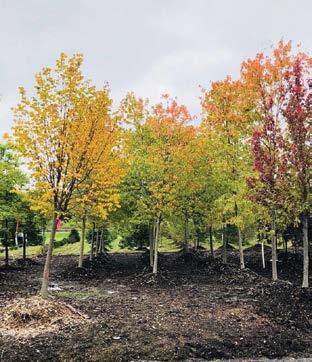
Adirondack Kids Day™ is October 7 from 10 a.m. to 3 p.m. at Arrowhead Park. This year, for those who come into the hamlet the night before on Friday, October 6 at 7 p.m., Justin and I will be sharing our Story Behind the Stories at the Inlet Public Library. The librarian has also promised ice cream!
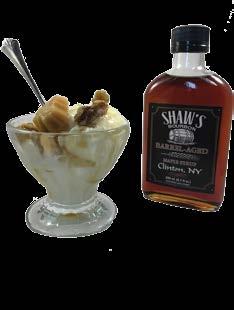



Admission for the day is free with free parking and a lot of family fun, rain or shine…or snow!
For more information visit InletNY. com. A schedule of events is also posted on The Adirondack Kids page on Facebook. •




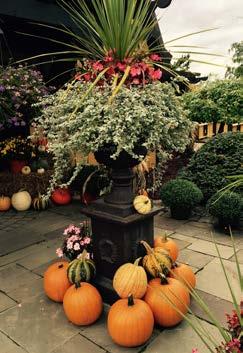


Gary VanRiper is an author, photographer, and pastor at the Camden Wesleyan Church. He has written 19 children’s books with his son, Justin. Learn more at: www.adirondackkids.com




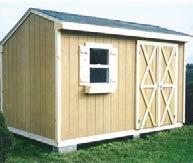




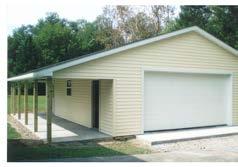
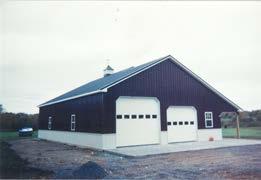



In 1974, Tim and Peggy Spencer Behrendt set off on an adventure. They began a new life in the woods of Cold Brook, NY, without modern conveniences like electricity or indoor plumbing. These are excerpts and reflections from Peggy’s journal chronicling their adventures and also her childhood memories growing up in Westmoreland.
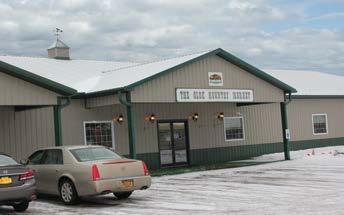
October is crammed full of essential and rewarding tasks, harvesting summer’s abundance, and preparing for the scarcity of winter. There are the obvious ones: getting firewood, canning food, insulating… but there’s another humble but very important task, autumn cleaning.
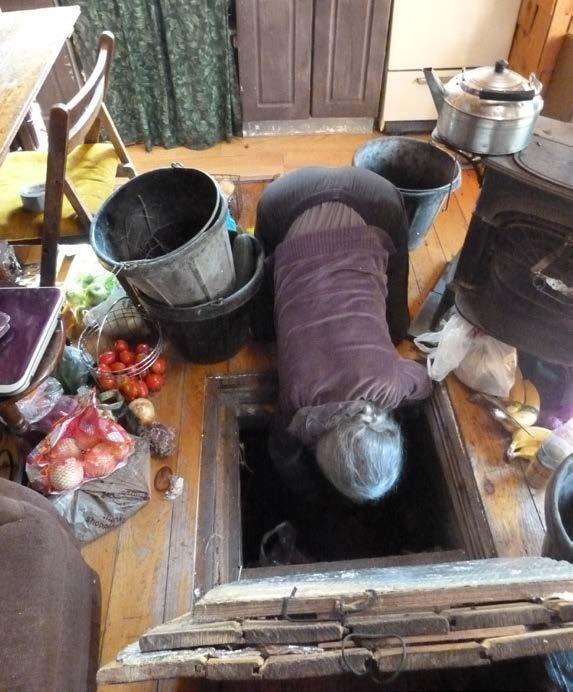










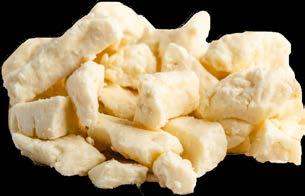
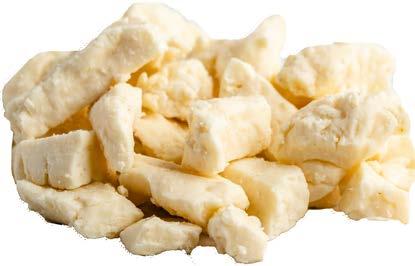

We think of spring cleaning, but it’s a long time until next Spring. In my last article, I wrote about our proclivity to gather wild apples as it is hard to resist free, organic fruit. We sometimes call it the “Chipmunk Syndrome” which is really a form of hoarding (a show I occasionally watch when I want to be inspired to simplify). It can be a good quality to ensure survival in some situations, but can also become a handicap.
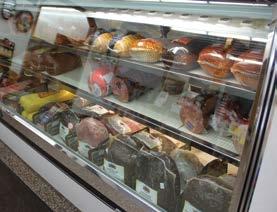
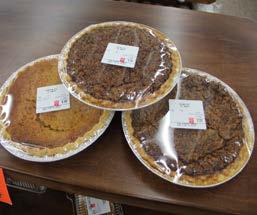


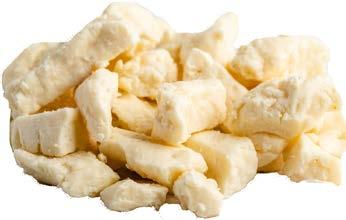



It’s impossible to eat or process all the beautiful apples we compulsively gathered, so they eventually begin to compost in the root cellar, giving our cottage an aroma of old cider/vinegar from the apple mush in the bottom of the buckets. We are bringing in garden vegetables now, so the 5-gallon rubber buckets of decaying apple slush must be hauled to the compost pile and washed. The clean, dry buckets are then filled with unwashed carrots, potatoes, and other delicacies harvested from the garden. These vegetables will be stored and kept through much of the winter.
We love to dig for potatoes and carrots. It’s like panning for gold. I like to invite visitors to choose a carrot to pull and see what comes out. One lady screamed when she pulled a particularly huge, long carrot as her prize! And I caught one youngster, displeased with his choices, sticking them back in the ground, looking for something better. Since they don’t transplant well at this point, I was displeased.
The short, stubby ones are hard to clean once the soil has dried on them in the root cellar, so I wash them right away in the creek and use them first. Some will have multiple “legs” looking like a creature that wants to run away like the Gingerbread Man of an old fairy tale. They are also hard to clean.
One year, I grew purple potatoes, which make a very pretty dish especially combined with Yukon Gold and white. Digging them up was weird, though, because in the ground, they rather look like turds of some sort and are hard to distinguish from clumps of soil or rocks. I al ways feel bad when my pitchfork stabs a potato and splits it.
It was a wonderful thing for large farms when someone designed the Eureka mechanical potato digger which was dragged behind a horse or trac tor. Farm hands would walk behind, picking up the unearthed tubers and putting them in a cart. Eventually a conveyor belt was added so stones
could be sorted out from the potatoes.

Last year, in Knoxboro, my sister Marion and her husband Ed grew the biggest potatoes I’ve ever seen! We made a special trip to Clinton to view an area prizewinner for the biggest pumpkin. It was 1,952 pounds. WOW!
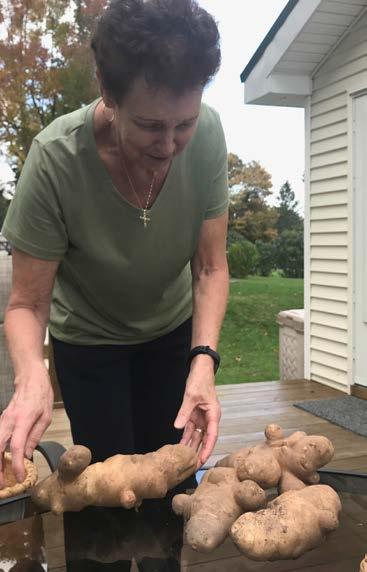
Another part of autumn cleaning is to wash heavier linens like blankets and bedspreads because there is still enough sun to dry them outside. It’s hard to wash and dry such large, bulky things by hand in the winter because it involves hauling water into the cottage from the hole we chop through the ice on the creek, heating it up on the wood or gas stove, and splashing quite a bit of water on the floor while agitating with rubber toilet plungers. Then, I have to squeeze out as much water as possible by hand and drape them over hangers or 5-gallon buckets in the shower stall to drip out. Finally, they are hauled up the ladder to the loft to finish drying while draped on more hangers. They dry quickly up there, but I worry that they’ll get dusty if we’re not careful about smoke or ash coming out of the wood stove below. So, you can see why it’s easier to do it outside in the fall.
Some years, volunteers from the Bank of New York, Mellon, or incoming freshmen from Hamilton College (“Finding Your Inner Lorax,” a sustainable lifestyle tour facilitated by Hillary-Joy Pitoniak) will spend an autumn day with us and are happy to spice their


work life with such unusual outdoor activities as doing laundry. The process is the same except that we have a “modern” 1919 manually operated washing machine with metal cups for the “agitation cycle” and an equally vintage handcranked wringer to function as the “spin cycle.” Then, everything is hung to dry on the clothesline. It surprised me one year to realize that some of them had never used clothespins! But this has always been a favorite activity by most of our volunteers.
I’ve seldom minded doing our laundry by hand over nearly 50 years. It gets me outside in fresh air, listening to bird songs or breezes rustling among the trees, and it feels good to do practical, meaningful work. However, it used up all my energy for the day. Now, I have access to a modern washer and dryer that is shared by other family members on our road, and it is really nice to have that option.
A high compliment among farm wives was: “She hangs a nice wash.” This meant that items are organized by their utility and color, creating an appealing art installation. Socks would be hung by the toe so the neck doesn’t stretch out. You didn’t mix towels with blue jeans. Dress shirts had to be hung by the seam around the sleeve, and sheets were hung together, double-folded so they couldn’t drag on the ground. If too much weight was on the line, you raised the height by pushing it up between two nails in a tall pole.
Everything was ironed by these farm wives,

even sheets and pillowcases, a daunting task with four or more children in the family! I remember seeing an ironing machine with rollers about 3 or 4 feet long at my grandparents’ house and being mystified as to its purpose. Now I realize that it was for their linens! Dress shirts for men in office professions even had to be starched, but Mom sent Dad’s to D&L Dry Cleaners for that.





October is not complete without a special trip to see the fantastic transformation of our earth to colors so bright and varied it feels like we must be at the end of the rainbow! I feel honored that my early October birthday falls on peak foliage time in Shawangunk. I’m 75 this year and have trouble comprehending how so many years have passed by, but feel fortunate to have decent health and my loving husband and family around me. I suspect that our active lifestyle and a wholegrain, fresh fruit, vegetables, and pescatarian diet have been positive factors. A recent documentary we saw called “The Blue Zone,” which explores factors in the lifestyle of centenarians around the globe, seems to confirm that simple daily chores and necessary activities like gardening and walking can be adequate exercise for health and longevity. Doing our laundry by hand, gardening, hand-wood cutting and splitting, getting water from the creek, and carpentry for almost 50 years has certainly kept us moving in healthy ways.

I’m celebrating my Sunday birthday this year by playing music. I’ll play piano duets with my friend Mark Bunce for a church service at St. Paul’s Universalist in Little Falls, then go to a Welsh Gymanfa at the New Hartford Presbyteri-

an church to share a few tunes on lever harp. My hands are sometimes shaky now, like my voice, but I’ll keep playing as long as I can.
I expect there will be a uniquely decorated cake made by one of our children, and a foliage trip perhaps on the ski lift at McCauley Moun tain in Old Forge, or a walk around Green Lakes State Park with azure blue waters reflecting gold and bronze-hued leaves from the bordering for est. One year, we went to Speculator to walk the handicapped-accessible Sacandaga River Path, and on the way back, we passed a couple of crazy turkeys begging for treats from the cars passing by.
Our six-year-old Great Grandson August re cently learned to pedal a two-wheeled bike, and it was such a delight to have him join us on our 4½-mile, scenic bike ride near home for the first time! Today, he and his sister are off for a sce nic train ride in Thendara, and our daughter and her husband will likely be doing some vigorous mountain trail biking. There’s something for everyone to do that gets us outside in the wondrous calliope of color we are so lucky to experience every year! •

The Shawangunk Nature Preserve is a deep ecology, forever wild, 501©(3), learning and cultural center. Tim and Peggy still live there and can be contacted through their website.
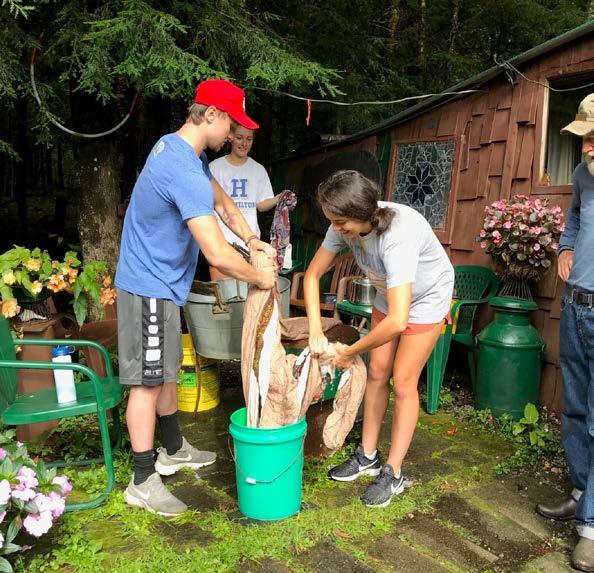
www.shawangunknaturepreserve.com

American & Amish Made
Keeping Mohawk Valley Living on the road for years!


Steet Toyota Yorkville (315) 736-8241


Steet-Ponte Ford Lincoln Yorkville (315) 736-3381
Steet-Ponte Mazda Yorkville (315) 927-5081
Steet-Ponte Chevrolet Herkimer (315) 866-5080



Steet-Ponte Volkswagen Yorkville (315) 736-8291

Steet Toyota of Johnstown Johnstown (518) 762-7222
United Auto Sales Yorkville (315) 736-3361

Steet-Ponte Nissan Yorkville (315) 864-7500


www.steetponteautogroup.com




•
• Knowledgeable and dedicated dealer support
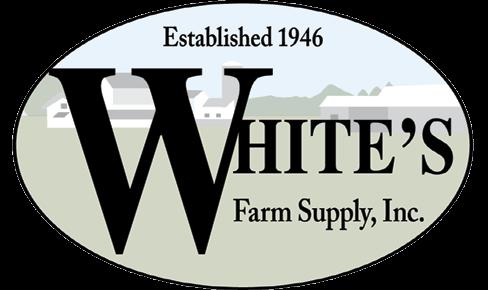

• A complete lineup of industry leading equipment
